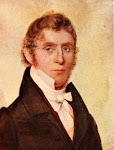 St-Helena, the South Atlantic island known to the world as the answer to trivia questions about Napoleon's final exile, finds itself thrust into the news spotlight this week, as a mass graveyard of former slaves has been uncovered there during preparations for the construction of a commercial airport for the remote British territory.
St-Helena, the South Atlantic island known to the world as the answer to trivia questions about Napoleon's final exile, finds itself thrust into the news spotlight this week, as a mass graveyard of former slaves has been uncovered there during preparations for the construction of a commercial airport for the remote British territory.Halfway between the decaying slave forts of West Africa and the overgrown plantations of the New World, on the tiny island of St Helena, archaeologists have uncovered one of the largest slave graveyards anywhere in the world.
The bones of some 10,000 young Africans lie buried in the rocky valleys of this isolated British territory in the South Atlantic, victims of the ruthless trade that Britain dominated in the 18th century but fought to suppress after the abolition of slavery.
A team of British archaeologists uncovered the first graves last year after preparation had begun to build an access road to the site of the planned new airport on St Helena.
The bodies, many of them children, were discovered where they had been buried after being brought to St Helena between 1840 and 1874 by Royal Navy patrols hunting the slavers. The captured ships were forced into the island where the traders were arrested and their victims liberated. By then, however, many were already dead in the fetid holds where they had been packed together for the long journey.
Many of the survivors also died soon after they were brought to Rupert’s Valley, near the capital Jamestown. It was used as a treatment and holding depot by the navy’s West Africa Squadron. Smallpox, dysentery and other diseases claimed many of those who had endured hunger, thirst and the terrible conditions below decks.
The discovery of so many bones is of enormous importance in researching the history of slavery. Few graves have been found of captives who died before they were sold in Cuba, Brazil, the United States and other parts of the New World.
...
Some 325 skeletons have been excavated. They are now being examined by a research team in Jamestown to determine their age, sex, life history and cause of death. So far, the vast majority have been males, with a significant proportion of children or young adults, some less than a year old.
...
Many of the young captives appear to have had a hard-working life before being shipped out of Africa. Between 1840 and 1850, 15,000 Africans were landed on St Helena, of whom nearly 5,000 died. The liberation centre did not finally close until 1874.
There's an interesting (although indirect) connection between St-Helena's most famous resident, and slavery. Here's the story, as chronicled in the fascinating 1824 book The History of the Island Of St-Helena, from the discovery by the Portugese to the year 1823.
On October 15th 1814, the HMS Northumberland deposited the captive Napoleon Bonaparte on the island of St-Helena, much to the surprise of its government officials, who weren't informed of their important new guest until a few days before, the news being carried by a faster ship sailing ahead of the naval escort.
Fast forward to April 14, 1816 and the arrival of Sir Hudson Lowe as the island's new Lieutenant-Governor. On his agenda: the emancipation of the island's slaves, an objective he approached cautiously, to allow him the ability to "... judge of the fittest mode to carry his purpose into execution." [pg 394]
At a meeting convened on the 13th of August 1818, Governor Lowe proposes that children born of slave parents, after a fixed period, become free. This outline was agreed to in a meeting lasting only ten minutes. Four days later, the committee in charge of fine-tuning the details of the agreement laid out the rest of the plan: “By this law, all children born of a slave woman, from and after Christmas Day 1818, are free, but to be considered as apprentices to the proprietors of the mothers, if males, until the age of eighteen years, and if females, until sixteen; and that masters and mistresses are to enforce the attendance of free-born children at church and at the Sunday schools." [pg 396]St-Helena’s movement for the abolition of slavery coincided with Napoleon’s presence on the island. (He died, poisoned or otherwise, in 1821.) It’s tempting to wonder what the architect of the Napoleonic Code, which returned the practice of slavery to the French colonies, thought about it all.

No comments:
Post a Comment